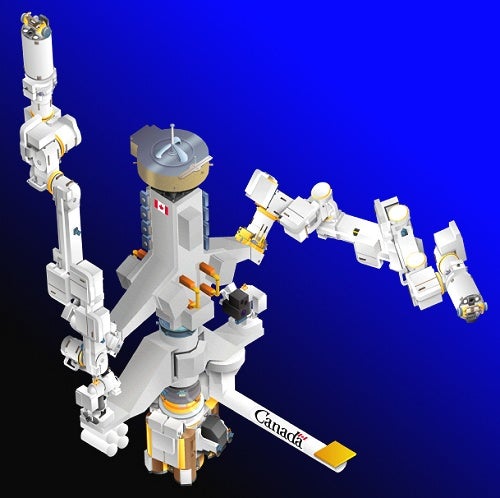On Monday, NASA Administrator Sean O’Keefe strongly endorsed a robotic mission to save the Hubble Space Telescope during a visit to NASA’s Goddard Space Flight Center in Greenbelt, Maryland. There he congratulated Hubble engineers for their efforts in testing available technologies for an unmanned mission to fix the ailing 14-year-old telescope.
Experts predict Hubble will fail completely by 2008 if it does not receive replacement batteries and gyroscopes. Just last week, one of Hubble’s four scientific instruments — STIS, the Space Telescope Imaging Spectrograph — experienced power problems and had to be shut down by controllers.
In mid-January, O’Keefe canceled a planned fifth Hubble servicing mission using the space shuttle in light of safety concerns following the breakup of the shuttle Columbia in February 2003, but scientists implored NASA to look at alternatives for extending the telescope’s working life, opening the door for robots.
“We’re now looking at how to initiate funding,” said Matthew Schaffer, head of the Hubble Space Telescope Robotic Servicing Mission program for the Exploration Systems Mission Directorate at NASA headquarters. Schaffer said that estimates of the cost of a robotic servicing mission run as high as $1.6 billion.
A large fraction of that money will have to be spent next year. In an interim report released July 13, the National Research Council committee established for assessing Hubble repair options noted any robotic mission would take substantial financial resources from NASA’s 2005 budget.
“We’ll have to make some difficult decisions on what gets funded and what doesn’t,” Schaffer told Astronomy.
Technologically, the leading contender for Hubble’s rescue is a two-armed robot known as the Special Purpose Dexterous Manipulator — officially named Dextre by the Canadian Space Agency. “I hadn’t heard that name until yesterday,” said Schaffer.
Dextre is designed to assist with servicing tasks on the International Space Station (ISS), at times working from one end of the station’s made-in-Canada robot arm and, at other times, roaming over ISS aboard a mobile transportation system. On ISS, a typical task for Dextre might be to replace a depleted 220-pound (100 kilogram) battery. This involves the ability to bolt and unbolt equipment, position hardware with an accuracy of one millimeter, align and insert the spare battery, and then properly engage all connectors. Although Dextre is capable of some autonomous work, more often, astronauts would operate the robot from a remote console within ISS.
According to Schaffer, tests with an engineering model of Dextre indicated that it can handle the tasks required for a Hubble upgrade. “It exists already,” said Schaffer, “we haven’t flown it yet.”
One hurdle for a mission built around Dextre is the time-delay human controllers on the ground will experience. Confirmation of a single requested action may take as long as 2 seconds because of the distances between Hubble, relay satellites, and controllers.
Meanwhile, a space shuttle mission to Hubble has not been completely ruled out. While NASA pursues the robotic option it prefers, the space agency is taking no action that would preclude such a mission.










